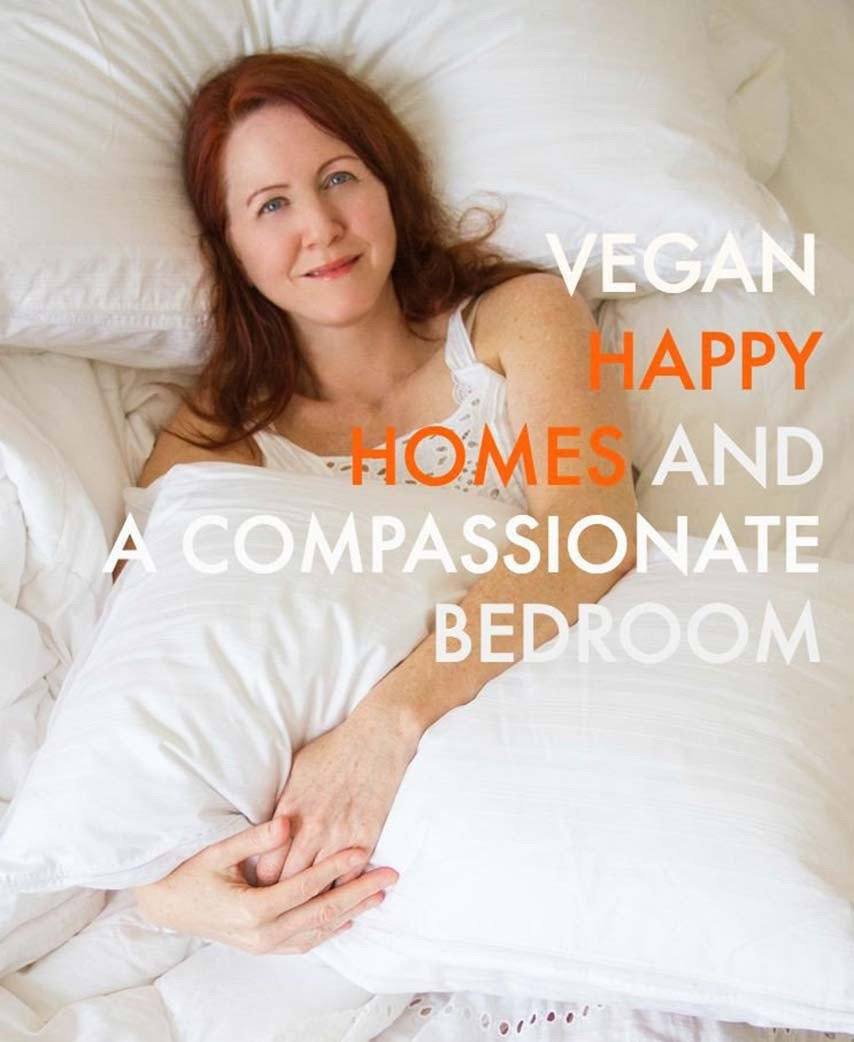
Compassionate Bedrooms for Peaceful Dreams
The bedroom is the heart of our home, our most intimate space. The bedroom is the room that recharges us, holds our secrets, and provides refuge. No piece of furniture is as important as our bed, the bedroom’s centerpiece. For me, a comfortable bed is key to my bedroom and comfortable for me means soft and warm.
Yes, I am a fluff junkie. I want fluff to surround me. I want to cocoon in fluff.
Before I became vegan, and before I really figured out what was making my fluff fluffy, I had down duvets and pillows. I knew they were down because of the occasional quill that would pierce the cover but I did not make the connection that there was anything harmful in consuming down. I never thought about the ducks who provided the down, or that they were being raised on industrial farms.
When I was in grade school, I fell madly in love with the book Make Way for Ducklings. In the story the whole town of Boston comes together to help Mom Duck raise her eight ducklings. I loved this book so much I turned a shoebox into a lake and crafted eight little babies out of yellow clay as tribute. Make Way for Ducklings perfectly describes many of our childhood feelings during trips to the lake to feed the ducks — ooos and ahhhs when they spread their wings and seem to float above the water and smiles when we see ducklings trailing after their mothers. How do we reconcile our childhood nostalgia for ducks with down? We can’t.

Down is the undercoating of duck, goose or swan feathers. Body feathers are also used for pillows, bedding and clothing. I suppose I believed that people just followed ducks around and picked up the molted feathers. Of course this is not what happens. Duck feathers are a commodity and industrially acquired. Down and feathers are acquired in one of three ways: (1) after the bird has been slaughtered for body meat and fois gras. The carcass is boiled and the feathers pulled. (2) Gathering, which sounds quite pleasant but really involves corralling hundreds of thousands of birds and pulling their molting feathers out at the same time which really often leads to …. (3) live plucking. Live plucking is the most profitable for farms. With live plucking, birds are forcibly plucked over and over, 6 to 7 times before they die from trauma or are killed for meat. This is done without anesthesia and often results in torn flesh and unbearable pain for the bird. Imagine having your hair pulled out over and over and over. Eighty percent of all duck farms are in China and the “production” of down is completely unregulated.
What?? This is not what I imagined. But now that I know, how could I expect to have peaceful dreams wrapped in the pain and suffering of another? I couldn’t.
Thankfully there are plenty of alternatives to down with more arriving in the market at a rapid pace. In addition to being compassionate for animals, down alternatives don’t make you sneeze. In fact, most alternatives to down are far better for your sleep, as well as for the environment.
My favorite straight-forward down alternative is PrimaLoft®. PrimaLoft® is a form of synthetic microfiber thermal insulation originally developed in the 80s for the US Army and now most famously known for ski jackets sold by stores like Patagonia. And the good news now for vegans and animal lovers is that PrimaLoft® is also used in bedding and performs similarly to duck feather in its ability to regulate body temperature in your quilts. PrimaLoft® is a trade name and there are many other competitors now on the market. A perusal through the internet for synthetic down is quite eye-opening!
Your pillows? Throw away your down pillows and give your neck a break! To dress my bed I keep two overstuffed PrimaLoft@ pillows as front decorative pillows but for sleeping I tested a half dozen to find my favorite (a clue? the material is also edible). Depending on whether your preference is firm, medium or soft, the varieties of pillows range from bamboo to latex to gel. Please avoid memory foam for toxicity concerns. My bed sports buckwheat pillows, as I find the material gives my neck the most support. Because buckwheat pillows tend to be smaller, I layer them under accent pillows.
Blankets. If you want to keep warm the old fashioned way and eschew anything synthetic, my best tip for keeping your bed chic and cruelty free is to use cotton blankets. As simple as that. Cotton blankets layer wonderfully, which is especially useful if you have children – the two or the four-legged kind. Bed layers make washing up spills and messes very easy. Because I am very sensitive to the abuse the planet takes to support industrial cotton farming, I look for either organic cotton, which is grown with less pesticides, or up-cycled cotton. Remember your favorite grandmother’s quilt? Up-cycled. Kantha blankets, found now in most home décor stores, are up-cycled saris turned into incredible, extravagant and very durable options both to add a bit of chic to any bed and support a small business, typically run by women, in India.

What to do with your discarded down bedding? Consider calling animal rescues or your local animal shelter to see if their pups and felines could use a little extra warmth. A beautiful testament to the tortured lives of ducks is to have their lost lives provide some comfort to another animal in need.
Sleep peacefully! Your bedroom is now considerably more beautiful and compassionate.

